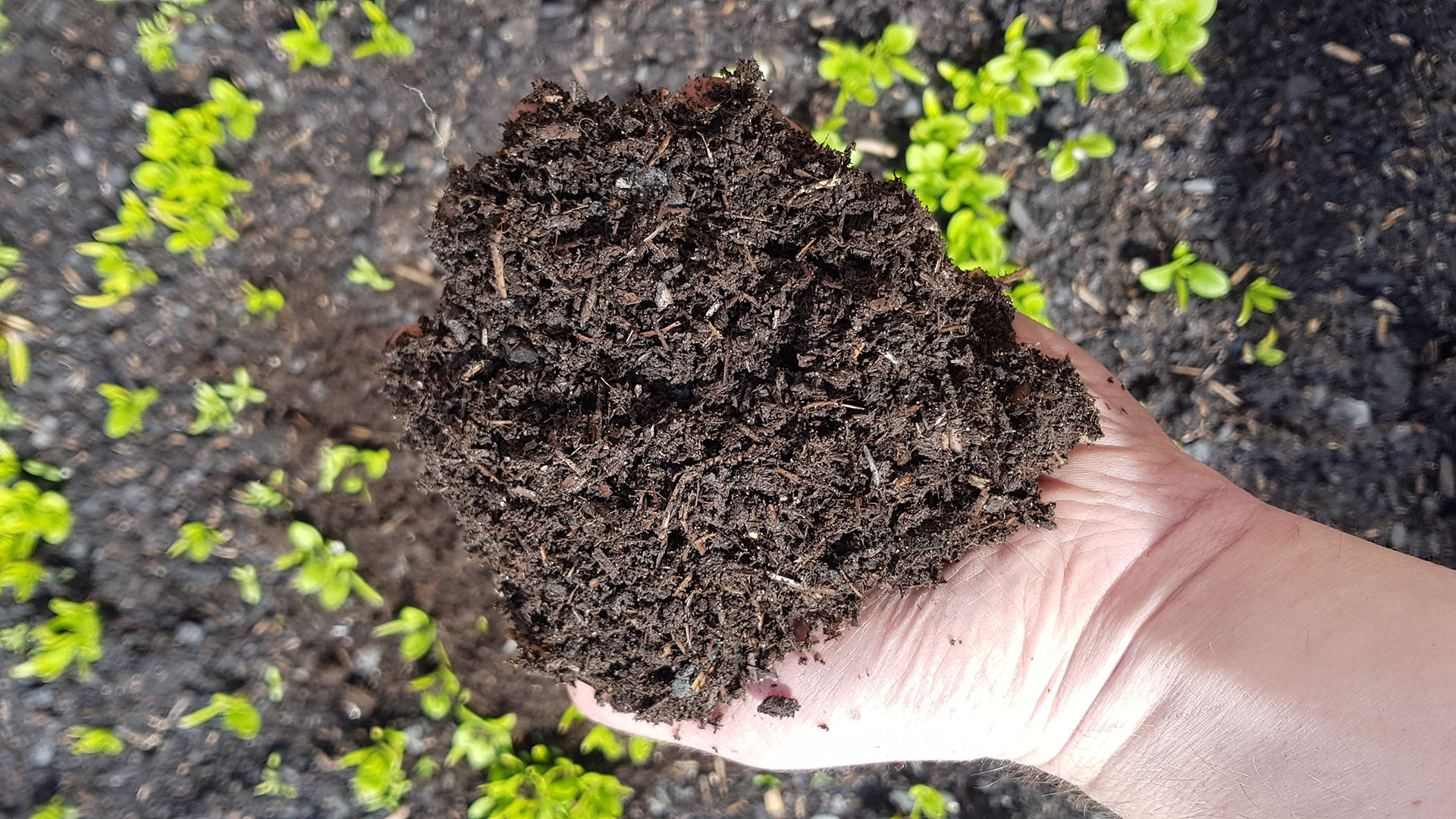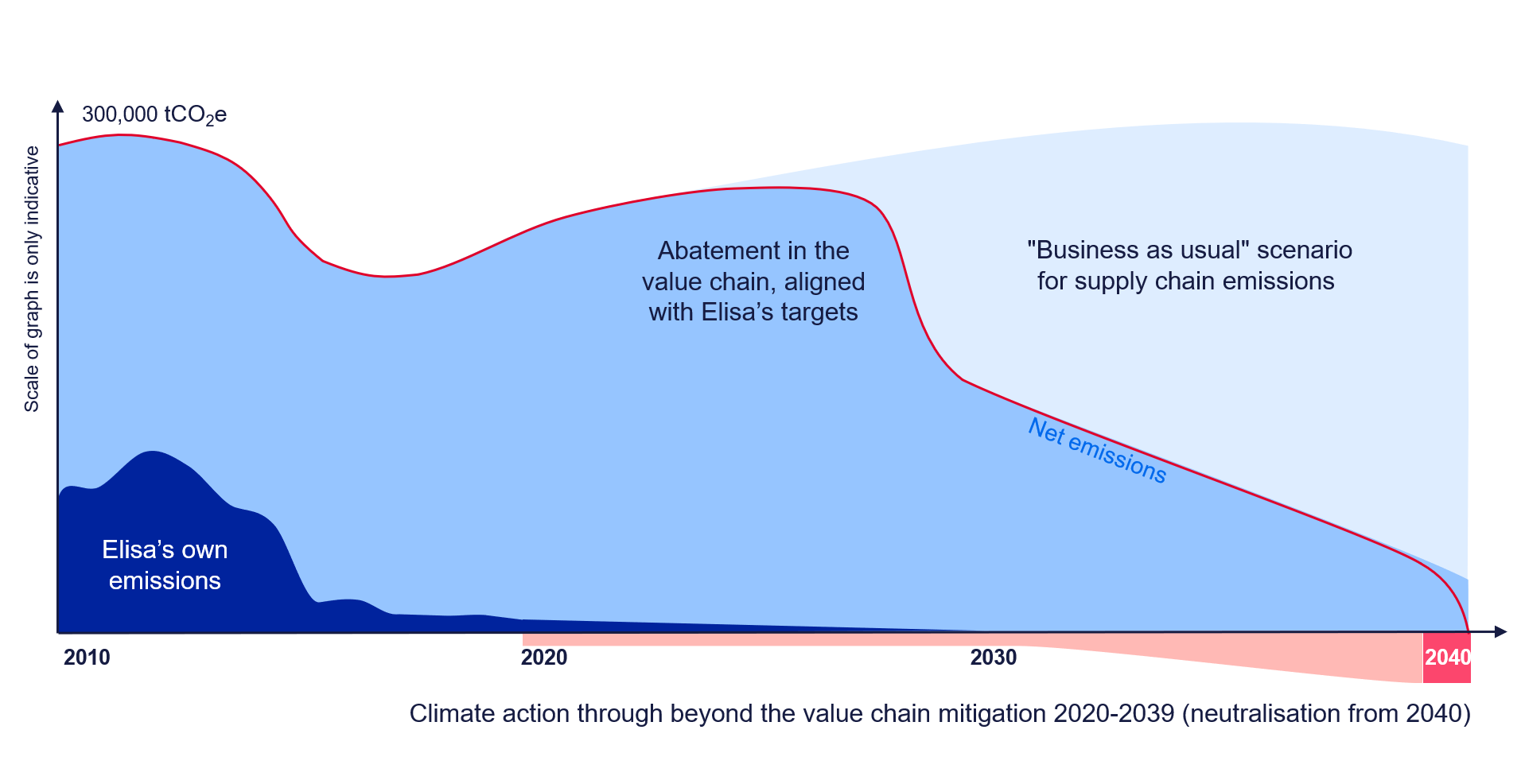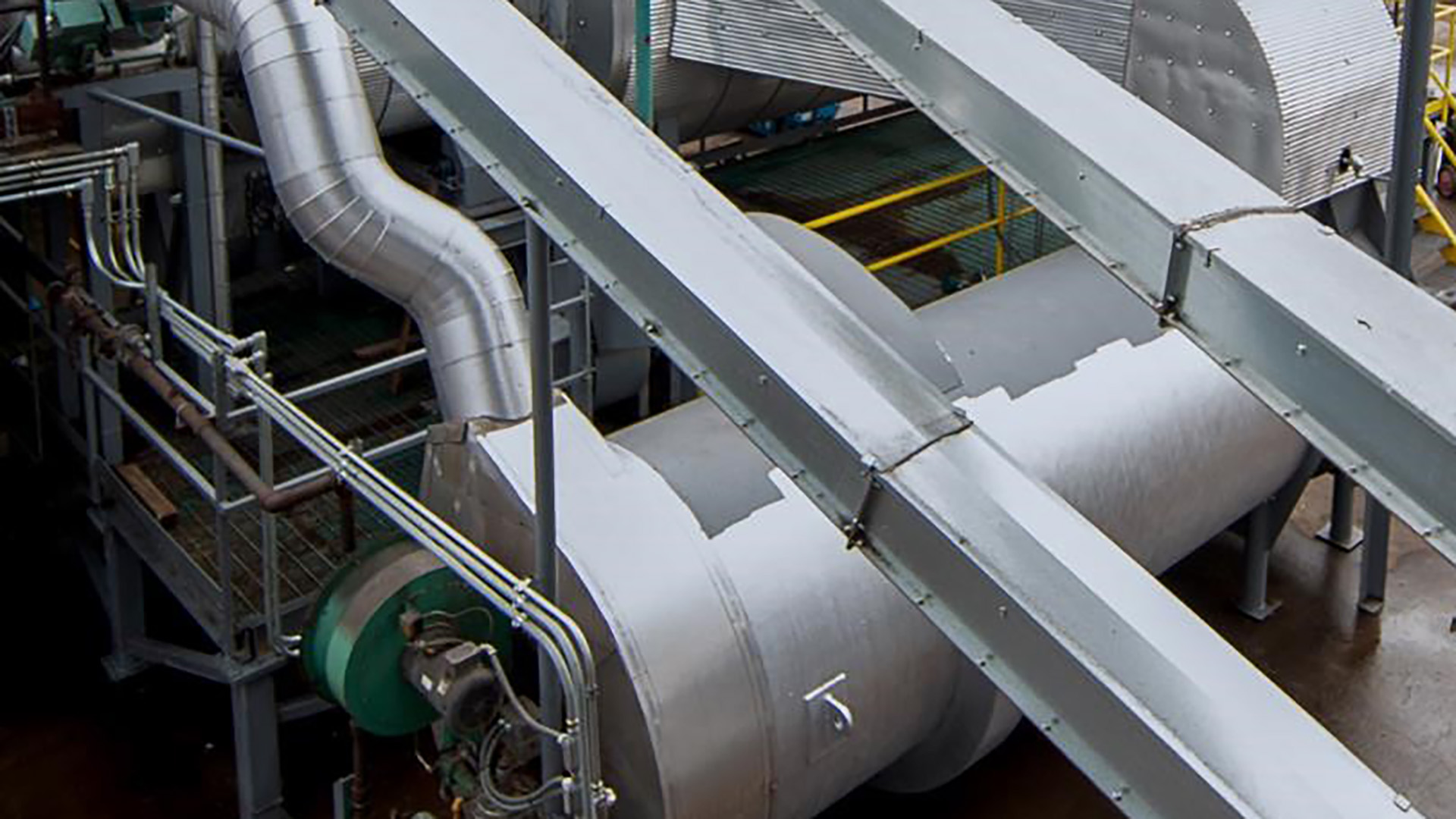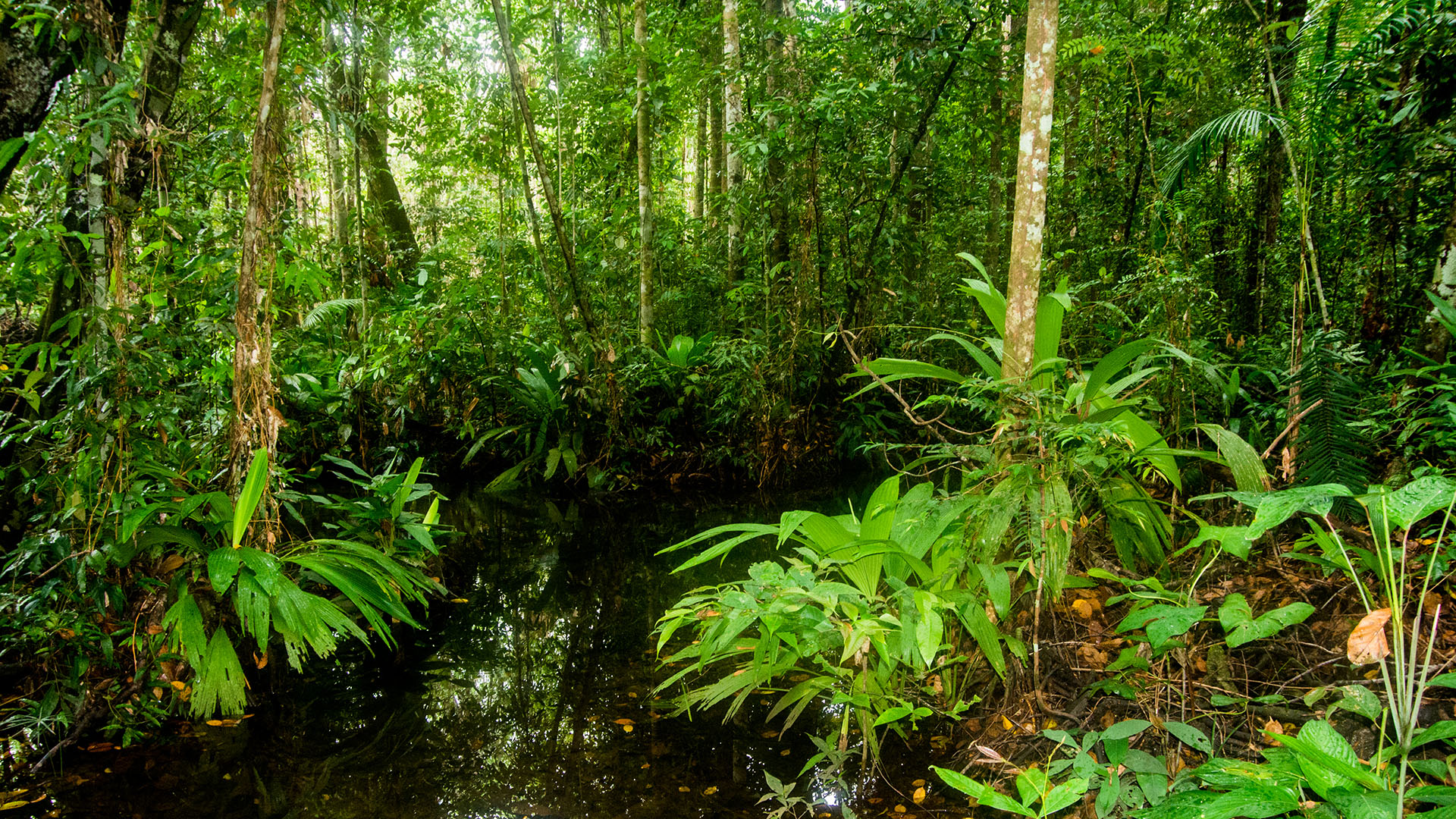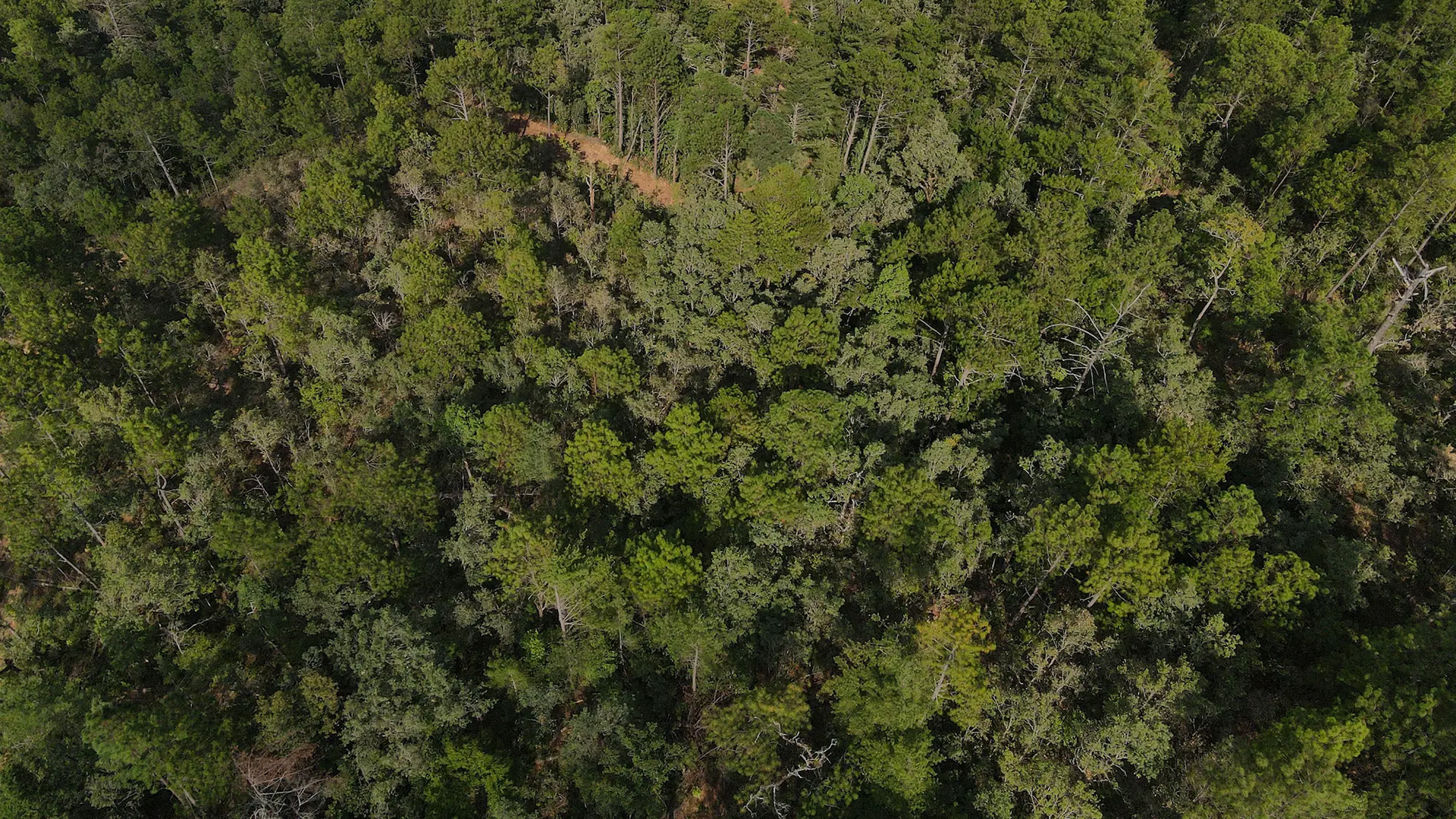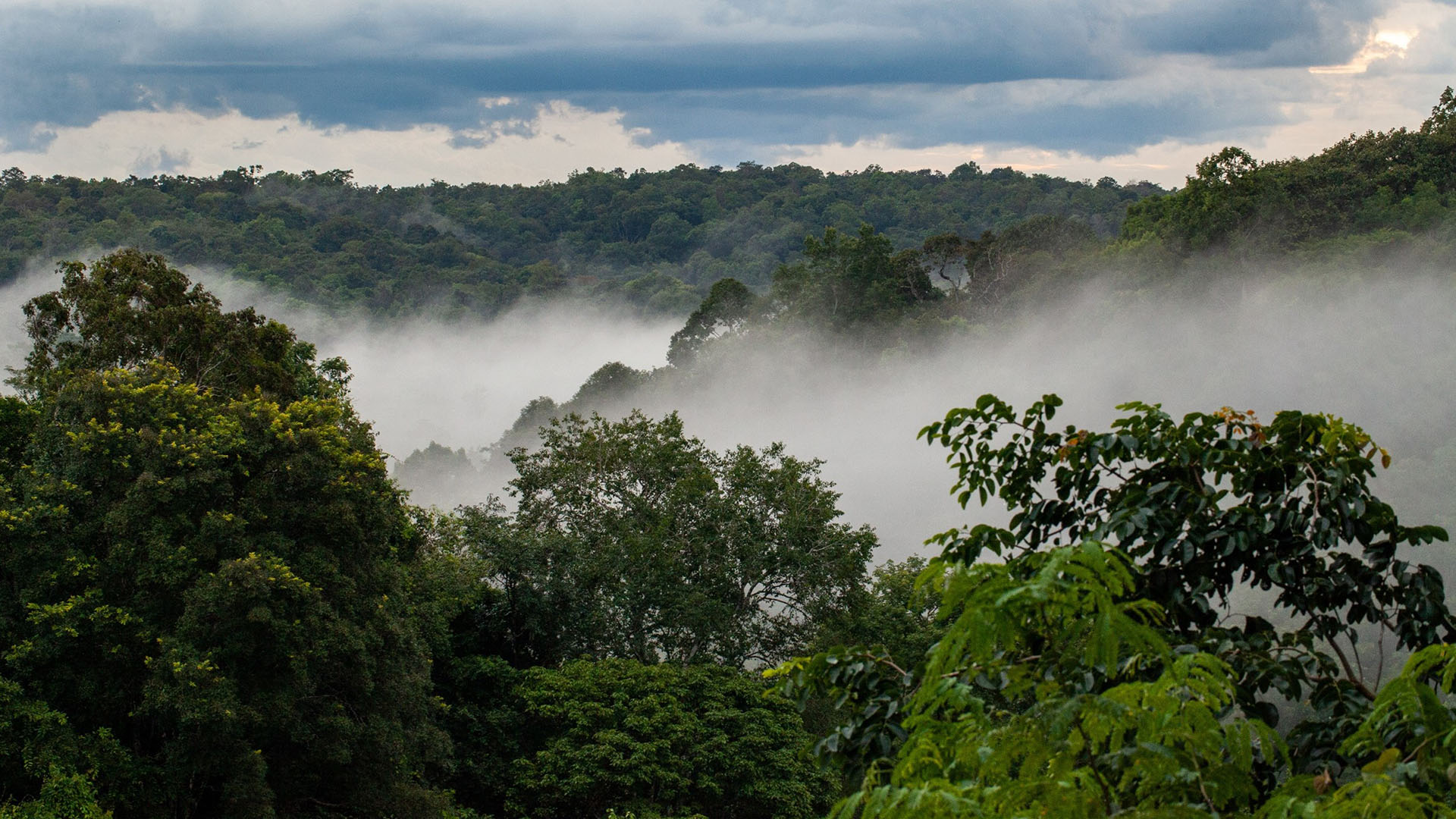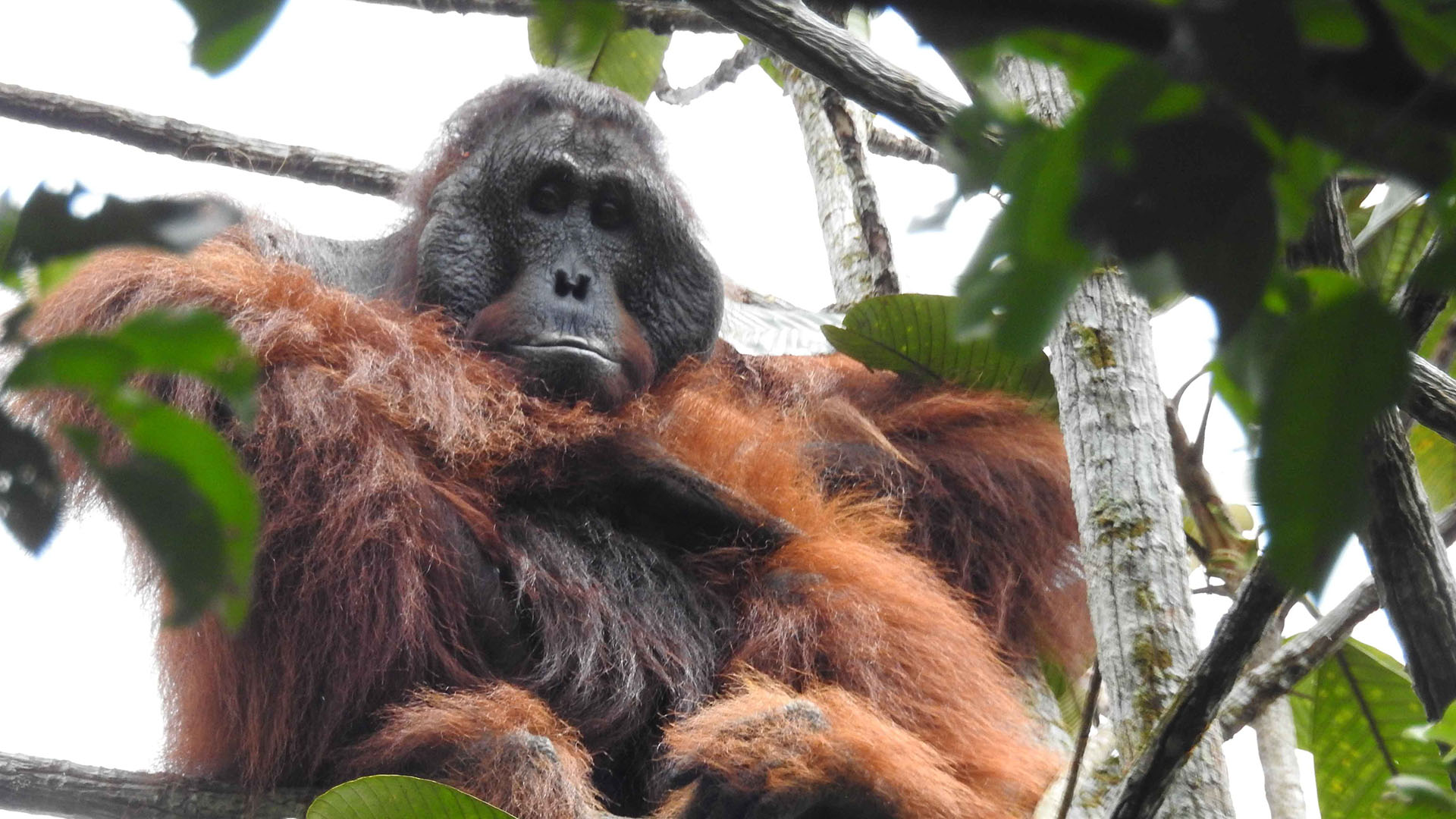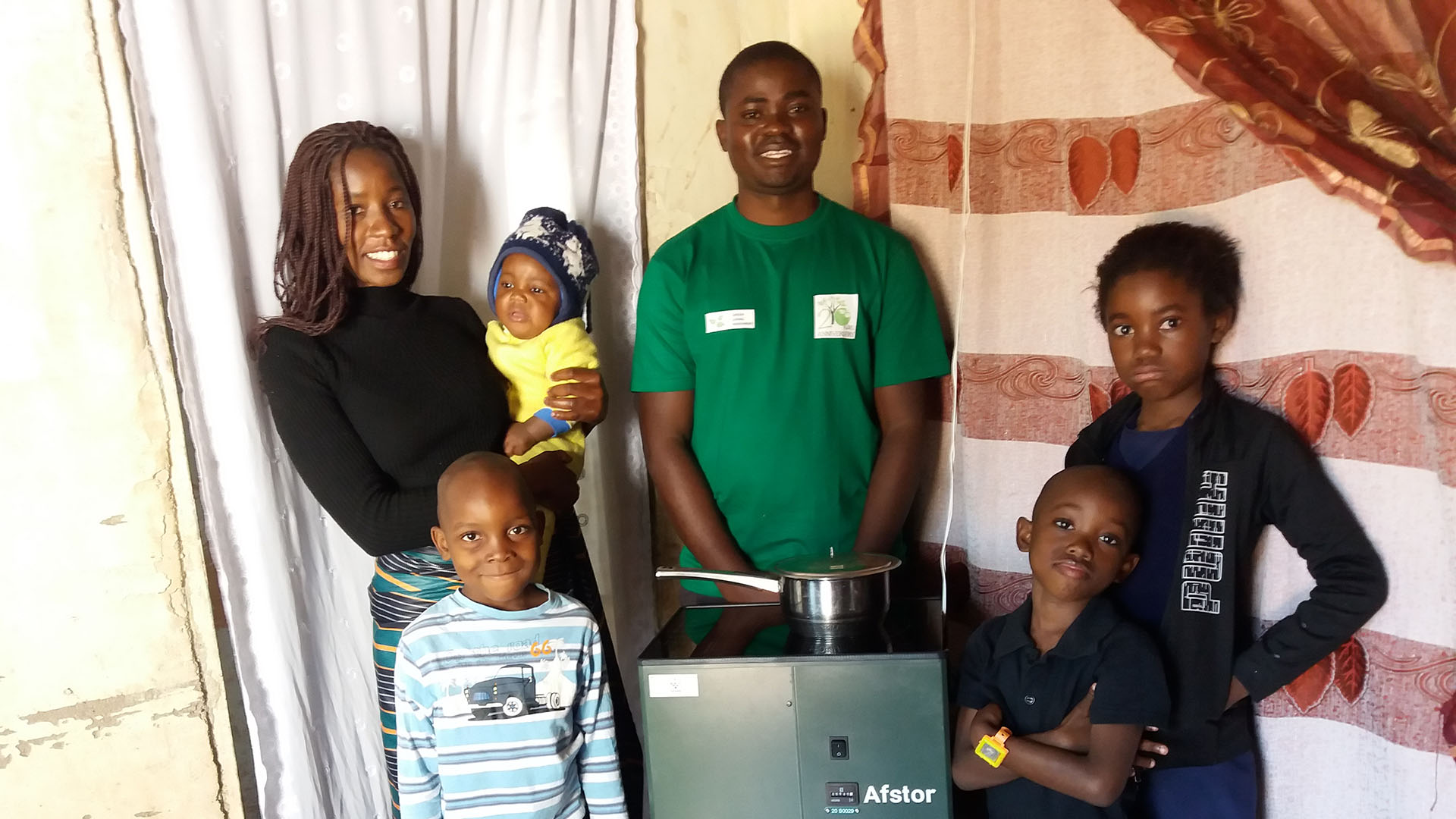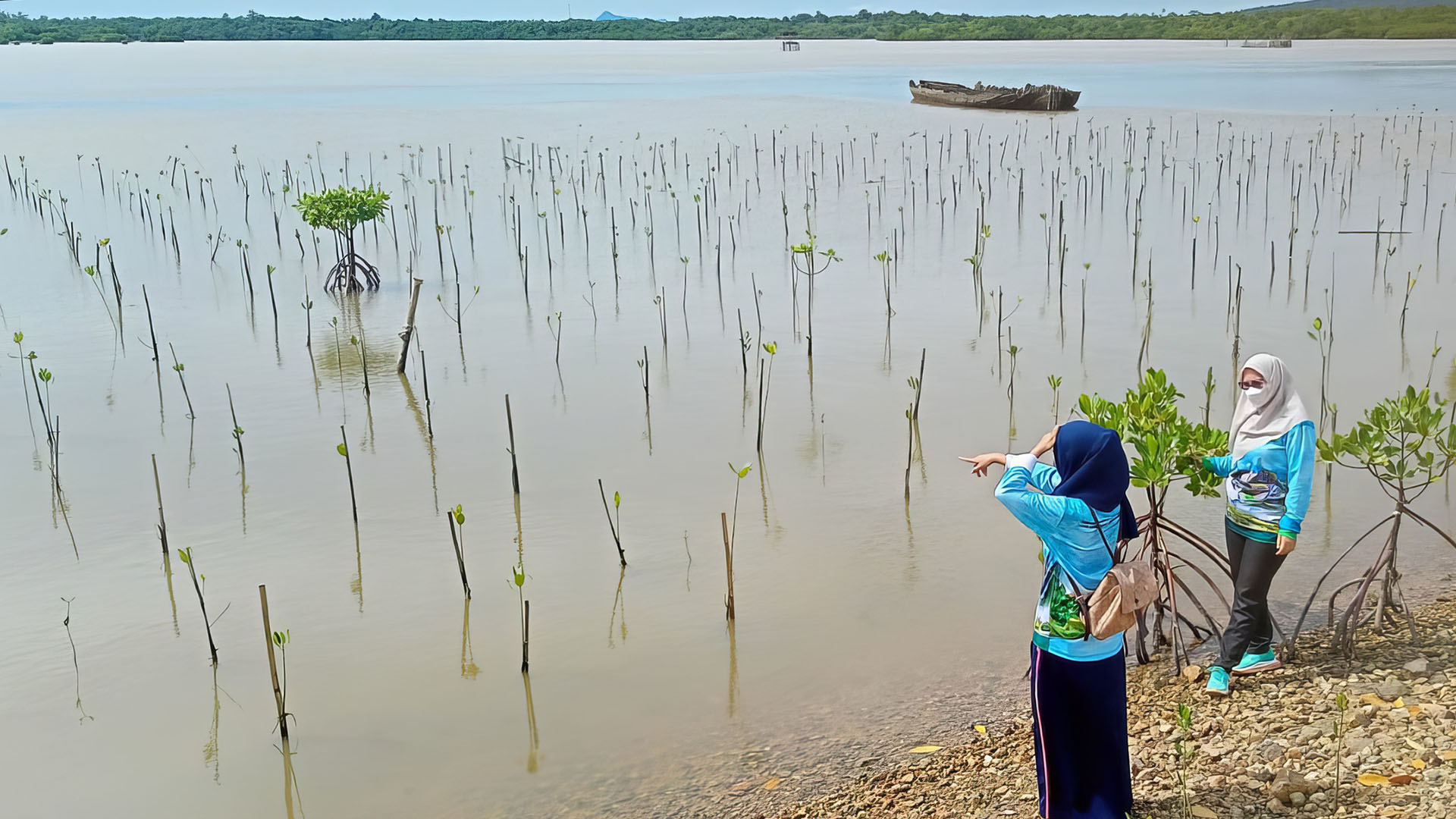What is carbon compensation or offsetting, and how does it work?
In practice, carbon compensation, or offsetting, means that a company supports climate-positive actions outside its own value chain, to the extent of the carbon emissions that it cannot immediately reduce itself. Carbon compensation generally means that a company acquires carbon credits. They do this, for example, by supporting reforestation projects in developing countries. The Science Based Targets initiative (SBTi) now recommends using the term “beyond value chain mitigation” instead of “compensation” or “offsetting”.
Why does Elisa use carbon credits?
Elisa’s primary objective has been to identify its own carbon emissions and look for means to mitigate them. We have therefore been carrying out, for example, strategic energy efficiency actions since 2009. Given that we cannot eliminate all emissions generated by our operations, since 2020, we have followed the practice of beyond value chain mitigation, with the scope of acquiring carbon credits in an amount equal to the remaining emissions from our own operations.
Are the carbon credits paid for by Elisa’s customers?
Elisa’s investment in carbon credits is our voluntary climate action, the costs of which are not collected from customers in the form of voluntary payments, for example. Nor do the costs have a direct impact on products or services.
Are Elisa’s services carbon neutral?
Since 202, we have been acquiring carbon credits in an amount equal to the remaining emissions from Elisa’s own operations, meaning from fuels (Scope 1), a small portion of other energy usage (Scope 2), from waste, as well as from business travel and employee commuting, including remote working (Scope 3). We refer this as being “carbon neutral in services by our own operations”, while noting that it is not a target validated by the SBTi. Beyond value chain mitigation through carbon credits complements our other carbon emission reduction activities within Elisa’s value chain, and in this way continues to serve Elisa’s customers and society.
How can I be sure of the climate benefits of carbon credits?
Elisa uses carbon credit quality validations by standards bodies like Gold Standard and VCS to lessen risks in the supply-side quality of carbon credits. We follow developments in methodologies that complement the work of these standards bodies. We transparently retire the carbon credits used by Elisa so that they can no longer be resold. Acquired carbon credits and their climate and other benefits are communicated in an understandable way on a regular and transparent basis.
How does Elisa choose carbon credit projects?
We choose carbon credit projects for Elisa that are of high quality, verified by standards bodies and in line with the UN Sustainable Development Goals. The mitigation effect is new and additional, and it would not arise without these projects.
We welcome and actively engage in dialogue with providers and other experts or stakeholders, in order to continuously develop Elisa’s carbon credit approach and portfolio.
Elisa has so far collaborated on beyond value chain carbon credits mitigation projects with Ceezer, Nordic Offset, Pachama, South Pole, Afstor and TreebuddyEarth.
